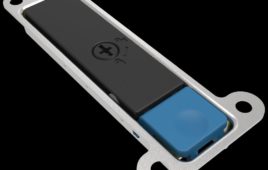 Sprint today laid out details on how it suggests the FCC address reforms to its spectrum screen. The carrier suggested the FCC weigh spectrum on two factors, including any given frequency’s propagation characteristics, as well the cost to a carrier to deploy on that spectrum in a given area (i.e. rural, suburban, dense metropolitan).
Sprint today laid out details on how it suggests the FCC address reforms to its spectrum screen. The carrier suggested the FCC weigh spectrum on two factors, including any given frequency’s propagation characteristics, as well the cost to a carrier to deploy on that spectrum in a given area (i.e. rural, suburban, dense metropolitan).
Sprint provided proposed spectrum weights aim to demonstrated “the relative cost to deploy spectrum for each environment and each band,” in an FCC filing. The included table also show spectrum weights derived for each of the commercial mobile spectrum bands currently included in the spectrum screen for each of the three environments.
According to Sprint, the spectrum weight in a band and environment is the inverse of the cost to deploy in that same band and environment. For example, the higher the cost to deploy in a band and environment, the lower the competitive value or utility of that band.
Verizon and AT&T have both made the case that Sprint is playing both sides of the fence. The carrier routinely boasts its holdings of 2.5 GHz spectrum as the backbone of its new high-speed Spark broadband network, but then argues to the FCC that its spectrum holdings are not as useful as those in the lower bands held by its rivals.
In a February 5 filing with the FCC, Verizon argued, “Sprint ignores, however, by far the biggest defect in the current application of the Commission’s spectrum screen: it omits 138 MHz of 2.5 GHz Broadband Radio Service and Educational Broadband Service spectrum, most of which is held by Sprint itself.”
“That means that the current screen counts only 452 MHz in total of spectrum suitable and available for commercial mobile services,” Verizon continued. “Omitting Sprint’s 2.5 GHz spectrum (as well as Dish’s AWS-4 spectrum) makes the screen seriously inaccurate – it counts barely more than 70 percent of the spectrum that should count.”
Verizon went so far as to produce a chart that demonstrates each carrier’s spectrum holdings in terms of megahertz. The chart, Verizon suggests, reflects that Sprint is the least efficient of the four national carriers, serving fewer customers per megahertz of spectrum than AT&T, Verizon Wireless, or T-Mobile. 
“Yet, ironically, it is Sprint that continues to lobby for limits on the ability of other carriers to acquire additional spectrum resources,” the filing stated.
Sprint returned fire, arguing that the advantages associated with the propagation characteristics of higher-frequency bands (notably, greater frequency reuse ability in dense urban areas, potentially providing greater capacity) can be accomplished with lower-frequency spectrum through conventional techniques such as reduced power and antenna downtilt. That said, Sprint also says that by contrast, the advantages associated with low-band spectrum – effective wide-area coverage and in-building penetration – cannot be replicated by an operator in higher-band spectrum without devoting significantly higher capital.
Sprint said it anticipates that the Commission’s revision to its spectrum holdings policies will add a number of additional bands, or portions of bands, to its revised spectrum screen. In particular, Sprint did not object to including the AWS-4 band, however it stopped short of giving its blessing to including all of the 2.5 GHz band, portions of which it says are limited by Globalstar’s existing MSS operations on the same channel.
“Nonetheless, Sprint does not object to adding BRS channels F4 and E4 to the screen since these channels are now more routinely available for mobile broadband use,” Sprint said.
Sprint also said the H-Block, AWS-3, and 600 MHz spectrum in the upcoming incentive auction should also be added to the screen once service rules have been finalized and auctions have been conducted. The framework set forth in the Appendix can be used to develop spectrum weights for each of these bands, and revised weighted spectrum screen numbers can be developed as each band is added.
Filed Under: Telecommunications (spectrums)




